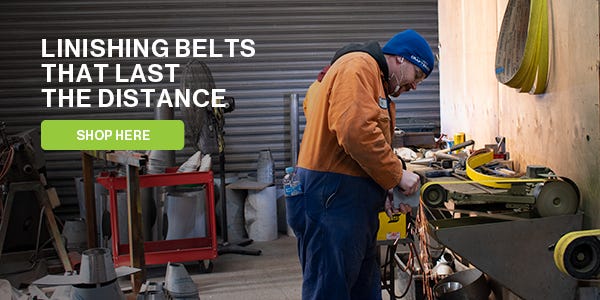Linishing belt troubleshooting guide
If you've been having problems with your sanding belt or machine, it's not the end of the world. We've made a list of the most common problems and how to fix them, like belts not running correctly on your machine, low cutting rate, or the finish you're getting isn't right. Check out the list below and find some answers!
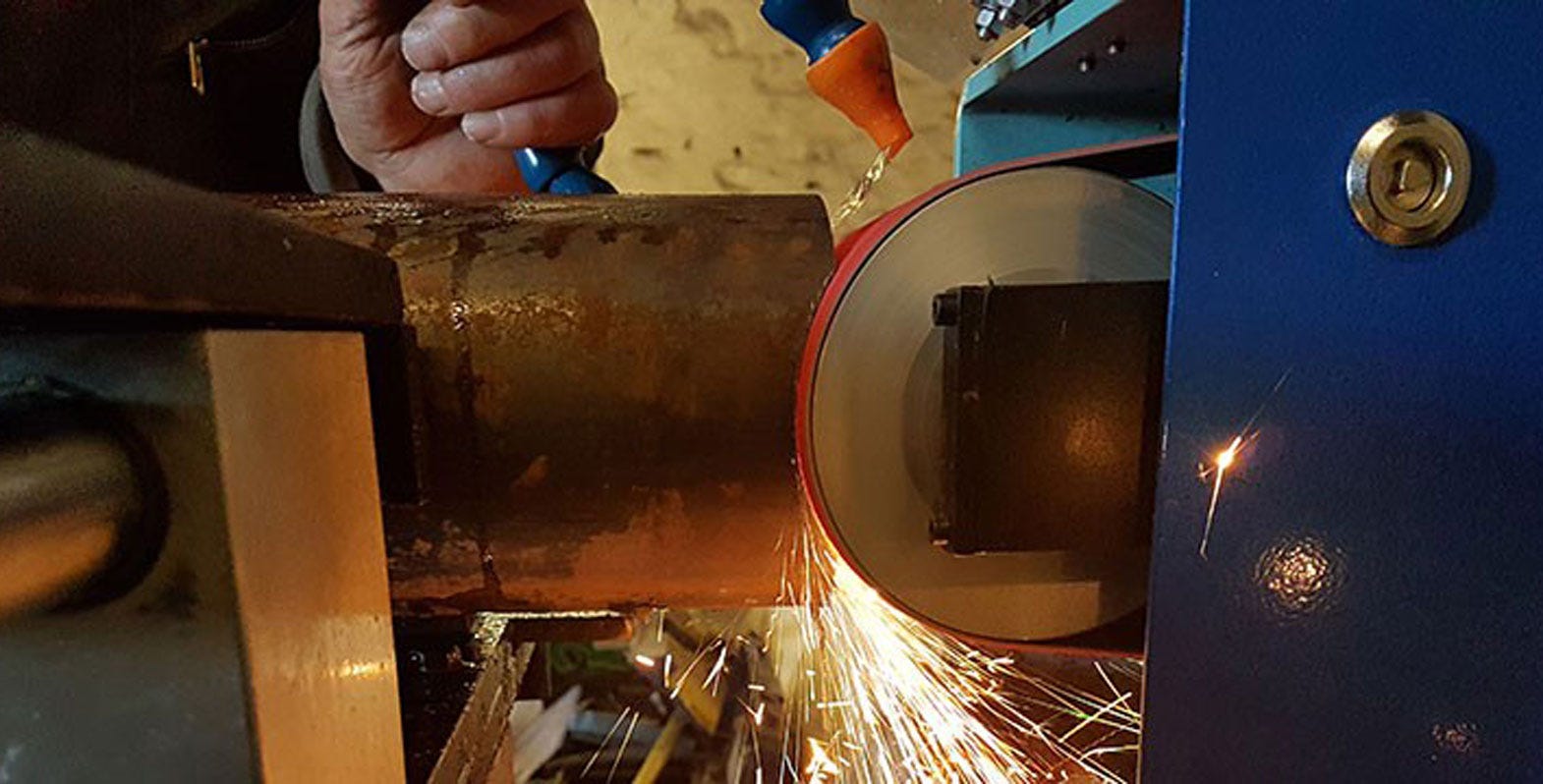
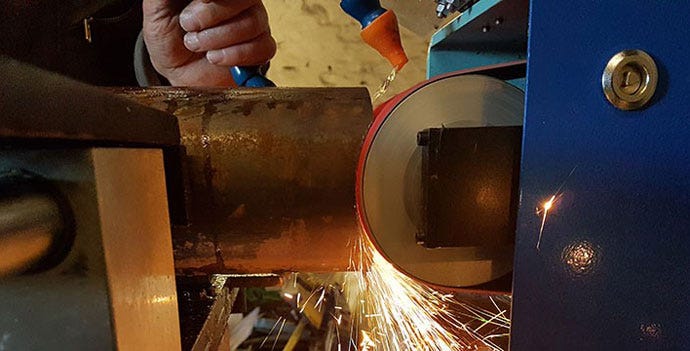
Sanding belt runs off the machine
Tracking mechanism not adjusted properly. (Belt moves slowly in one direction, but fast in opposite direction) – adjust tracking mechanism.
Belt tension too low – adjust tension of belt.
Linisher_machine_Cut.jpgGrinding load too high – backing of the belt is not heavy enough. Look for a belt with a heavier backing, and a type that is designed to remove stock faster so less pressure is needed. (sharper and heavier zirconia/ceramic grit)
Damaged or fluttering edge of belt causes tracking malfunction – replace sanding belt with a stronger backing, or grit. (sharper and heavier zirconia/ceramic grit)
Tapered contract wheel - redress, or replace contract wheel.
Short belt life or low cutting rate
Heavy usage, or wanting faster removal - use coarser grit size, or belt for heavy use (zirconia/ceramic).
Loading or glazing of abrasive grit on belt – try belt with top coat to stop loading or glazing.
Improper storage conditions for belts - always store in dry, and close to 20C as possible.
Belt commodity not well suited to material – relook at type of belt, Sharper grit, different grit (Zirconia, Ceramic, Trizact)
Grit coming off backing – could be because of improper storage, or too much pressure, wrong belt for the working surface.
Contact wheel worn unevenly in centre, necessitating high grinding pressure to obtain full coverage of work - check by using very light pressure. Full coverage of work should be obtained. - Try to sand on all areas across the face of the belt, not one area.
Dust collection inadequate or restricted – clean out.
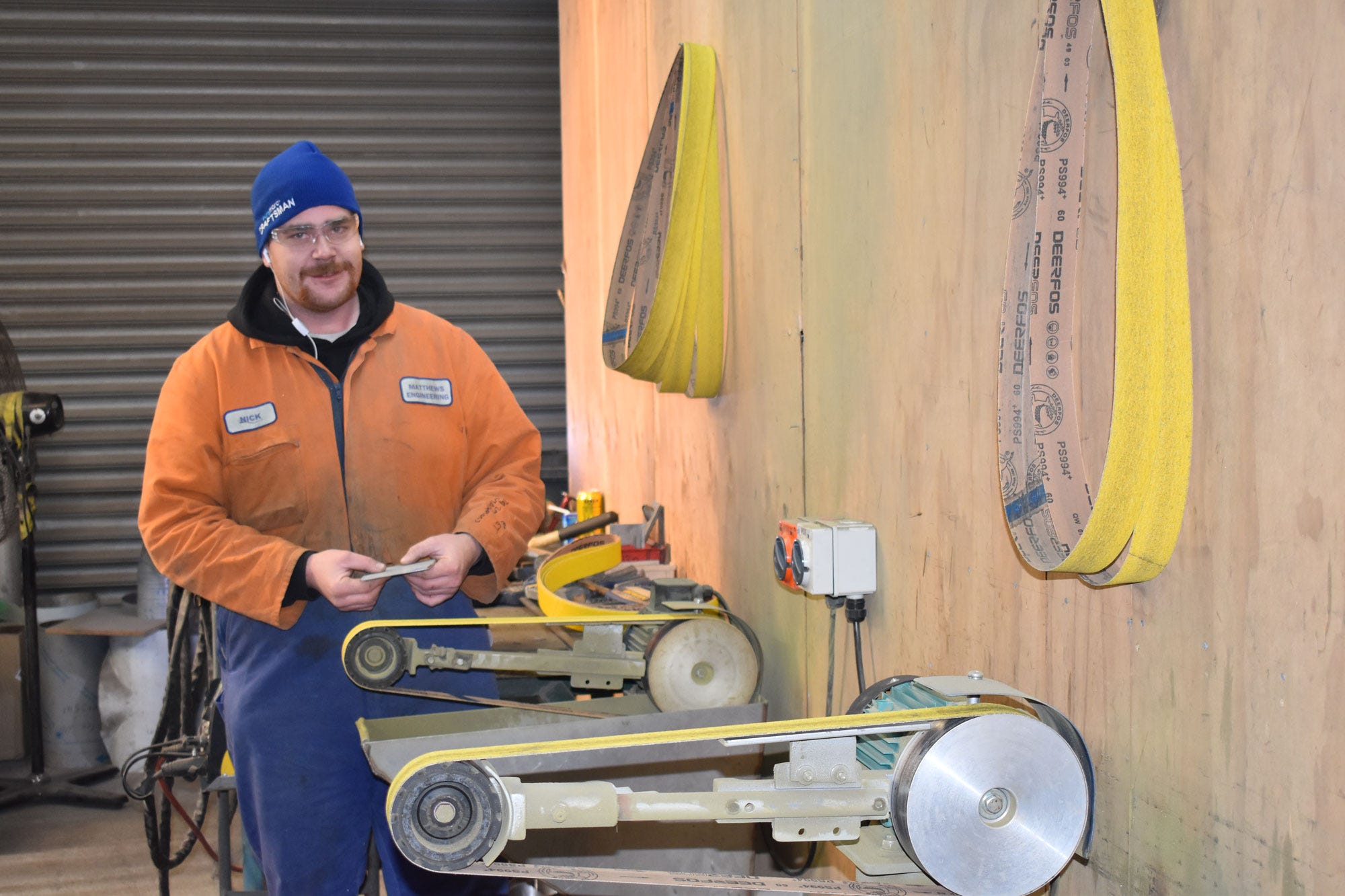

Random scratches in finish product
Loading or glazing of abrasive on belt – try belt with top coat to stop loading or glazing.
Missing steps in sanding process - step-up from the last grit to high so not getting out the last scratches fully, Max double the grit (P) each step-up. (often it better to use a number of grits to get up to a fine finish)
Carryover of swarf between adjust heads – clean wheels, check dust collector.
Damaged face of contact or platen – redress or replace.
Finish not fine enough
Grit too coarse – try a finer grit, (Trizact belt for very high finishing)
High pressure needed to remove sanding marks – step-up from the last grit to high, Max double the grit (P) each step-up. (often it better to use a number of grits to get up to a fine finish)
Missing steps in sanding process - step-up from the last grit to high so not getting out the last scratches fully, Max double the grit (P) each step-up. (often it better to use a number of grits to get up to a fine finish)
Sanding belt breaks
Belt creases or damaged in handling – replace belt
Grinding load to high – look at new belt with heavy grit for faster removal so there is less pressure need for heavy loading.
Glazing of abrasive grit on belt causes break – try belt with top coat to stop loading or glazing.
Incorrect splice or improperly made – replace belt
Wheels misaligned or offset in wrong direction - adjust and fix linishing machine
Belt tension to low – due usually to heavy grinding load on one side of belt
Sanding belt slipping under load
Belt tension too low - adjust tension of belt. If it loses its tension, it may need a heavier belt backing.
Shock load on belt due to big variation in work thickness - redress the way the work piece is linished. Try new anti-slip and heavier backing.
Plain steel rolls do not provide enough traction - knurl or serrated surface.
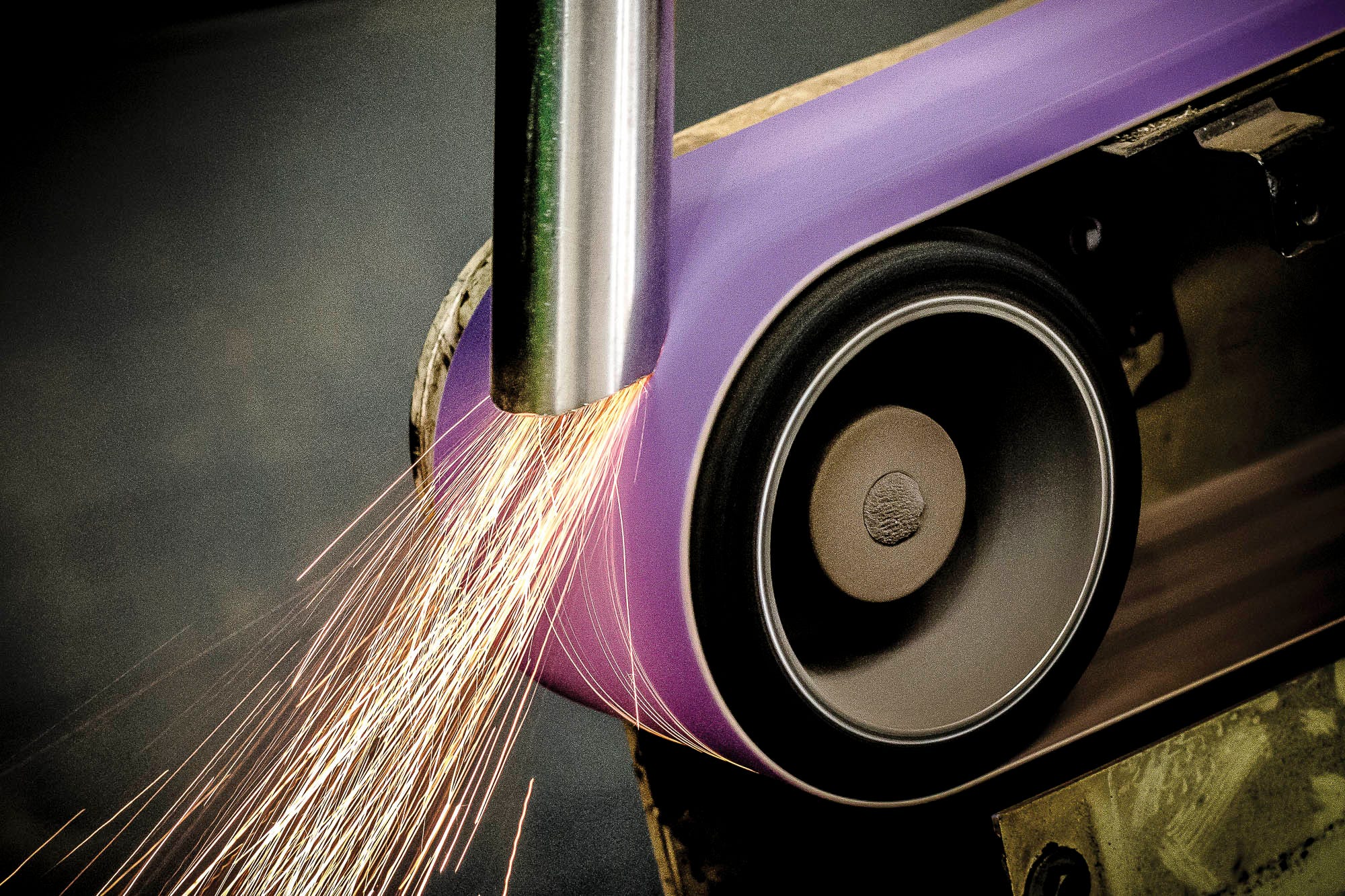

Sanding belt creases or folds
Belt cone – shaped (different in length from side to side) If crease angle is always the same direction, mount belt so directional arrow is running backwards. If crease angle changes direction, belt is cone shaped. – Replace belt.
Tapered contact wheel - reduce to remove taper, worn out contact wheel which may need replacing.
Contact wheel and power wheel not parallel – fix linishing machine.
Belt tension too low – adjust tension of belt.
 Need assistance?
Need assistance?
